|

FUKE SHAKUHACHI
|
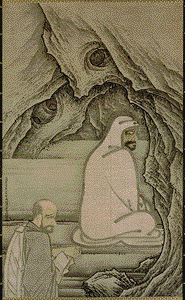
|
Although official history of the
Fuke-shu sect starts only with the Edo era, Shakuhachi of this sect
and its philosophy would have been introduced from China to Japan in
the 13th century by the grand Hotto Master.
Disciple of Chosan, 17th descendant of the
Fuke sect of China which was created in the 9th century, he returned
to Japan in 1254 in order to transmit his teaching. Thus the bases
were thrown out of what was going to become one of most admirable
contemplative music. |
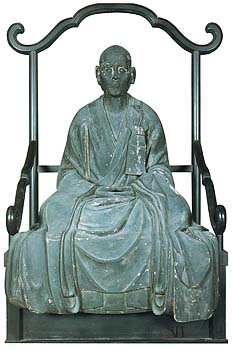
|
|

Blowing
Zen |
The monks
of this sect played Shakuhachi instead of practicing Zazen
(ภT sitting Zen or sitting position to
meditate) and reciting Sutras. Shakuhachi was then considered not as
a musical instrument but as a religious instrument dedicated to
meditation. From this concept of Blowing Zen (T ); meditation by the blowing in
opposition to sitting Zen.
The Fuke sect was a branch of the Zen Buddhism just like the
Rinzai sect.
With the coming to power of the Tokugawa
Government (birth of the Edo era), the control of the Buddhist monks
became a tricky question which was necessary to be solved quickly in
order to impose and maintain the order and safety; it should
remember that monks of that time did not devote themselves only to
the meditation and the study of the precepts.
Some sects were more feared than respected by people and
Government for making reign of terror (in the facts, it was a
question for the government to control powerful religious orders who
wished to preserve their independence, which is in contradiction
with all dictatorial policy). |
|
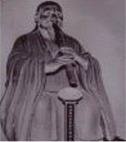
|
It
should also be reminded that the coming to power of Tokugawa had been done
with many sacrifices, and that a great number of Samurai following the
defeat of their clan became Rônin, Wandering Samurai through the force of
circumstance. In order to control this mass of Rônin likely to seek to
appease their revenge and to save the honor of their defeated clan, it was
the right time for the government to positively mobilize these
energies.
Under the dictate of the Tokugawa government, the Komusô monks
were thus gathered around Temples allowing to control them more easily. It
is around this sext exclusively made up of members coming from the noble
class of warriors; the Samurai - that was officially created the order of
the Buddhist Zen Fuke-shû sect.
These warrior monks called Komusô
(ณm monks of the Emptiness) are known for their hat of reed hiding
their face.
|
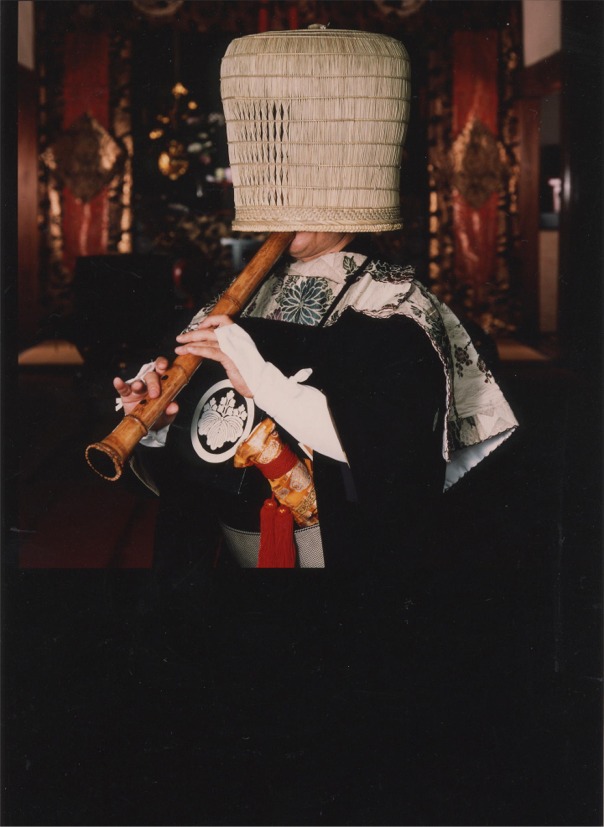
|
During the Edo era, Komusô monks played an important role in
the maintenance of law and order established by the Government of
Tokugawa aiming to maintain peace and to thwart political intrigues.
This stabilized domestic policy enable to preserve a lasting peace
during 265 years.
In exchange of favor done to the
government, Komusô were free to pass without obstacle the various
points of control around the country, and had many privileges of
which among other things the right to carry
dagger.
At the end of the shogunate of the Edo era, it comes to
appear that a few number of impostors not belonging to the class of
Samurai were putting on the dress of Komusô; some to survive thanks
to the flute, others to flee and hide (the Komusô wore a hat of reed
hiding their face) from the authorities. These pseudo-monks not
being familiar with the traditional parts, played of the popular
airs having nothing to do with the traditional pieces of which the
aim was the meditation.
|
With the Meiji (1868) revolution, the Fuke
sect was dismantled and prohibited in 1871 by the new administration in
place because of its implication and its active role in the preceding
government of Tokugawa.
|
Just like it is the case in the majority of the great
traditional schools, one can consider that the teaching is
transmitted on two levels: the basic teaching given to the members
of the sect, and fundamental teaching to some initiated only.
The tradition wants that the heir
of a school transmits the secrets of his heritage to one or two
disciples so that the teaching does not disappear. These disciples
in their turn are
charged to transmit the heritage.
The tradition and teaching of
Master to disciple thus continued to be transmitted until
nowadays via some Grand
Masters like Miyakawa Nyozan, Kobayashi
Shizan, Okazaki Meido, Katsuura Shozan, Takahashi
Kûzan, and today Fujiyoshi Etsuzan.
One of the characteristics of the
Fuke sect was its assortment. Indeed, the different temples situated
in the various provinces of Japan transmitted parts of identical
name pieces but often
of different contents. The reasons are simple; In order to preserve
the secrets, the pieces were often transmitted only partially to the
monks coming from other temples. Moreover, it did not exist until
recently of written music sheet, and the memory is sometimes
capricious. |
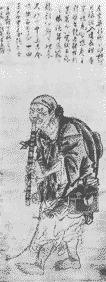
|
It is Takahashi Kûzan who gathered and
synthesized teaching to transmit the original pieces and their variations.
He would have inherited more than 260 parts whereas it continued his
spiritual search through Japan (าCs
Musha-shugyô or spiritual
search of the warrior monks).
Thus, it is known that Suzuru
(฿) is the oldest
version of the piece "the nest of the crane", which gave rise to different
variations and whose name evolved to give parts known under the name of
Tsuru No Sugomori (฿ฬ
โฤ).
One also knows that various pieces coming
from different provinces were transmitted under the name of Reibo
(้็). In order to classify them, one often added the name of origin;
thus Kyûshû-Reibô and many other pieces were renamed to preserve the
traditional and various repertory of the sect. It is also the case of the
parts Shirabe (ฒ)(piece sometime transmitted under the name
Chôshi which is a mistake) where the name evolved to Yamato-No-Shirabe,
etc, according to their origin, and of many other
piecesc
Today, pieces transmitted in Fuke-shû
school are notified with their place of transmission ( Fudai-ji temple,
Ichigetsu-ji, Reihô-ji, Myôan-ji etcc). It is thus possible to go up again
with the origin.
Shakuhachi has always been more than a
sect, but a musical principle and a philosophical school of thought. If
for political reasons, this philosophical school born from the Buddhism
Zen was structured during the Edo era, its essence resides above all in
its music and musical bases.
Fuke Shakuhachi never disappeared even if its teaching was often
transmitted in the secret.
Parallel to this teaching centered around
the traditional pieces (which remain its base), the training today also
turned to other styles of music such as Minyô-Shakuhachi or folk
Shakuhachi, Western classical music, folk music of the world, jazz
and as well as others, giving a universal dimension to this instrument and
this music absolutely unique in the world.
|



![]()


